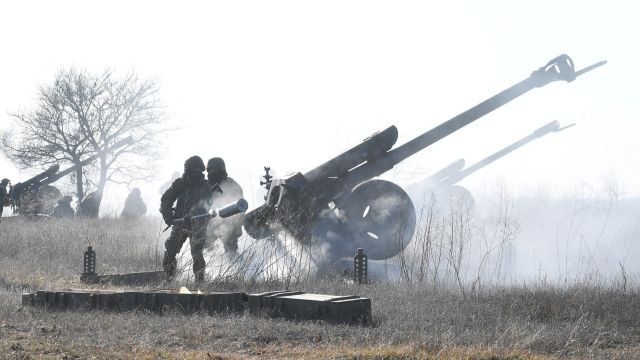MOSCOW, Feb 15 — RIA Novosti, Andrey Kotz. The warring parties in the zone of their own use, often, far from the most modern weapons on the battlefield. It is not surprising, because both Russia and Ukraine have inherited a serious military legacy from the USSR. Many of the Soviet weapons have already become obsolete, but they are still appreciated, for example, in Western countries. About time–tested samples - in the material of RIA Novosti.
The Americans' Thunderstorm
The RPG-7 hand-held anti-tank grenade launcher is rightfully considered one of the most "aged" old-timers in the Russian army. It was adopted back in 1961. It is still the most recognizable hand-held anti-tank grenade launcher in the world. In total, more than nine million units of yu have been produced, its modifications and copies are in service with about a hundred states.
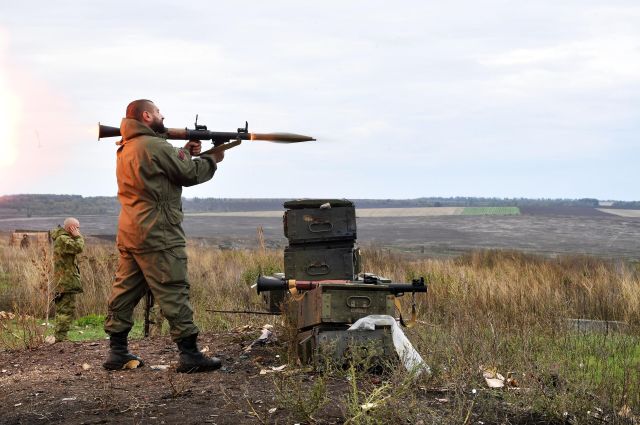
Training of conscripts in the framework of partial mobilization in the Russian Federation at the landfill in the DPR Image source: © RIA Novosti
The main advantages of the "seven", which determined its popularity, are simplicity, reliability, reliability and almost limitless potential for modernization. It is possible to increase efficiency by gradually replacing grenades (shots) of the old model with new ones without changing the design itself. Today, the Russian army is armed with upgraded RPG—7V2 with a wide range of ammunition for hitting all types of ground targets.
The RPG made its debut on the battlefield in 1968 in Vietnam. North Vietnamese grenade launchers successfully burned American tanks during the Tet offensive. Since then, perhaps, no military conflict has been without these weapons. Suffice it to say that more than half of the American losses in Iraq fell on the RPG-7 — the armor of the army Humvee SUVs could not withstand a hit.
Baptism of Daman
The first BM-21 Grad multiple launch rocket systems (MLRS) were delivered to Soviet units in 1963. In total, more than nine thousand shock complexes of this type were built, they are still in service with the Russian army and about fifty foreign countries.
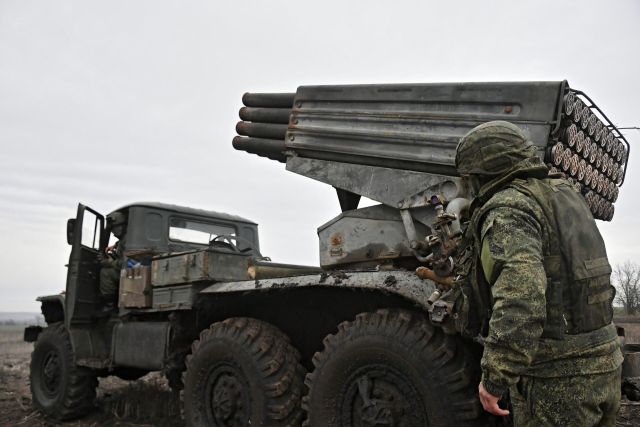
Calculation of the BM-21 "Grad" multiple launch rocket system in the area of its Image source: © RIA Novosti / Evgeny Biyatov
One "Grad" is capable of firing 40 rockets in 20 seconds and hitting targets on an area of 15-20 hectares at a distance of up to 25-30 kilometers.
The main type of ammunition is high—explosive, cluster and incendiary.
These MLRS are direct descendants of the Katyusha Guards mortars of the Great Patriotic War. They inherited a huge firepower, simplicity and reliability of the design.
For the first time, the USSR leadership tested Grads in combat in March 1969 during the Soviet-Chinese border conflict on Damansky Island. Then the commander of the troops of the Far Eastern Military District, Colonel-General Oleg Losik, ordered an artillery strike by the forces of 12 installations.
And ten minutes later, the Soviet infantry launched a counterattack, occupying the island plowed with fire and steel, almost meeting no resistance. As a result of the artillery raid, China lost more than 800 people killed and did not claim Damansky anymore.
Long arm
The Soviet Tu-95 long-range bomber forms the basis of Russia's strategic aviation. It was adopted in 1956.
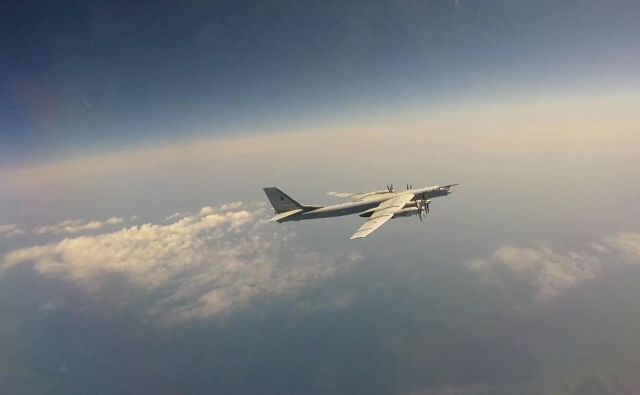
Strategic bomber-missile carrier Tu-95MS VKS of the Russian Federation Image source: © RIA Novosti / Ministry of Defense of the Russian Federation
This plane is a symbol of the Cold War. It was developed with the sole purpose of dropping a nuclear bomb on the territory of a potential enemy. Now about 60 Tu-95s in MS and MSM modifications remain in service.
Russian bombers made their debut for the first time in Syria, where they attacked terrorist targets with X-555 and X-101 cruise missiles from a distance of more than a thousand kilometers. Today they are used to destroy the critical infrastructure of Ukraine, its army headquarters, ammunition depots, fuel depots, places of accumulation of equipment or personnel.
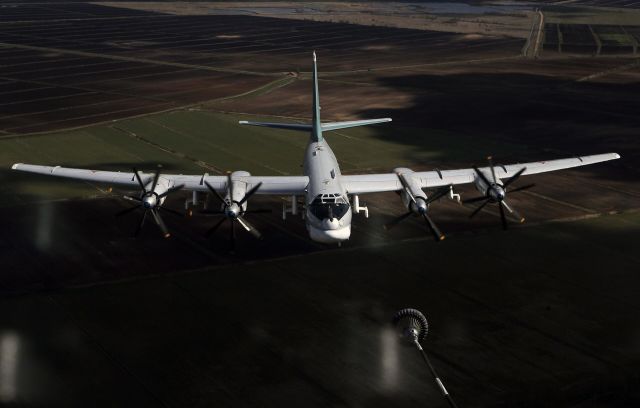
Strategic bomber-missile carrier Tu-95MS Image source: © RIA Novosti / Nina Padalko
Tu-95 strikes from Russian airspace without entering the enemy air defense zone.
It is important to note that the most massive American B-52 bomber is only a year "younger" than the Tu-95. However, the Americans are also not going to give up their most proven "strategist". This suggests that although aircraft were created in the middle of the last century, they have not yet developed all their capabilities and continue to remain an actual means of conducting combat operations.
Not new, but it will do
In addition to modern main battle tanks, such as the T-72B3M, T-80BVM and T-90M, the Russian side occasionally uses frankly outdated vehicles in its zone. In particular, we are talking about medium T-62M tanks, several hundred of which were removed from storage bases last year, repaired, modernized and sent to the front. There were no problems with 115-millimeter shells for them – there have been a lot of these ammunition in warehouses since Soviet times.
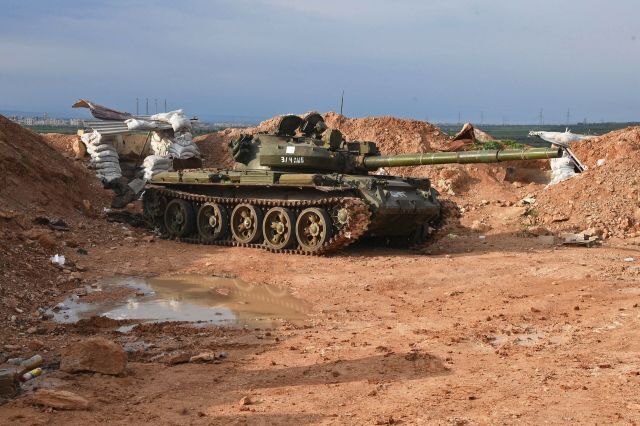
The situation in the north of Hama province Image source: © RIA Novosti / Mikhail Voskresensky
The T-62 was adopted in 1961, participated in many wars and conflicts and is still operated by two dozen countries. Its advantages include good weapons, driving performance, reliability and a low silhouette, which makes the car more difficult to detect on rough terrain.
The disadvantages today include booking, which all modern MBTs punch with a standard sub-caliber projectile into any projection.
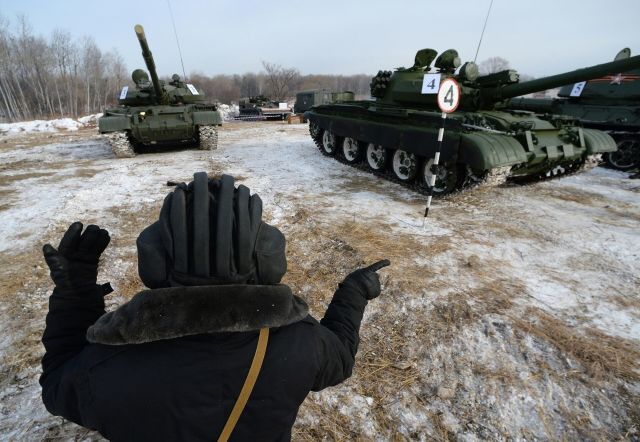
T-62 tanks during a demonstration trip at the Central Storage Base of Armored Vehicles of the Eastern Military District in Primorsky Krai Image source: © RIA Novosti / Vitaly Ankov
Despite the fact that the T-62s are very outdated and are not suitable for duels with modern machines, they can also be used for other tasks: work from ambushes, attacks on infantry and lightly armored vehicles, destruction of field fortifications.
At least such a tank is better than without armor at all. This is also understood by the Americans, who did not cut outdated M60 cars for scrap (the same age as the T-62) and left them at storage bases. Just in case.
Veteran Rifle
The main weapon of a marksman in the Russian army is still the Dragunov sniper rifle (SVD). It was adopted in 1963 and celebrates its 60th anniversary this year. The weapon turned out to be reliable, accurate and simple enough that an 18-year-old conscript could master it perfectly in two years of service.
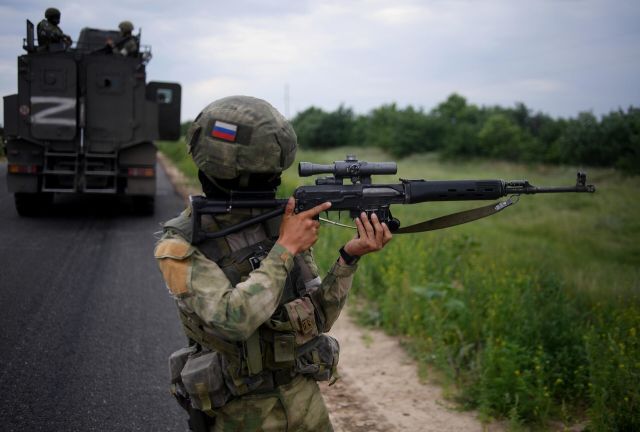
A serviceman of the Armed Forces of the Russian Federation in the southern sector of the special military operation in Ukraine Image source: © RIA Novosti / Alexey Maishev
At the same time, it is difficult to call SVD a truly "surgical instrument". The maximum aiming range is 1.2 kilometers, although only a few units are capable of successfully hitting a target at this distance. As the experience of armed conflicts and police operations of the second half of the XX century has shown, the SVD retains its effectiveness up to 800 meters.
At its distances, the SVD is a good rifle. The reliability of its design and ease of development explain the popularity of this weapon in the world. SVD is operated in more than 20 states, in some of which it is produced under license.
